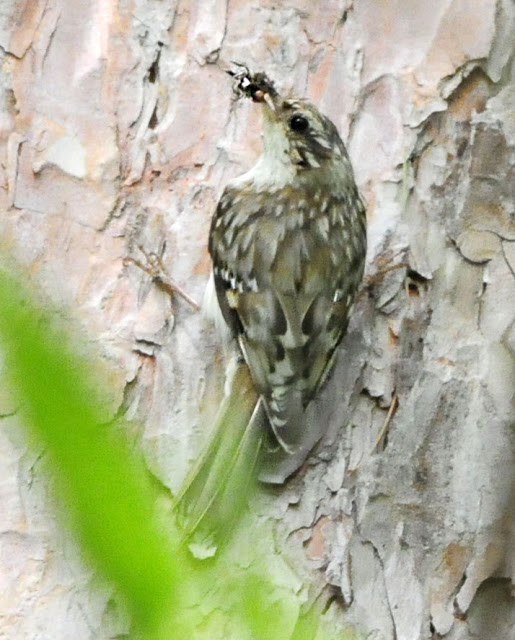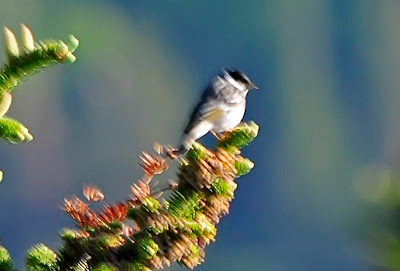Birds do look happy when they sing.
We know that birds live on a very tight energy budget. No wasted motions. Everything has to have a purpose for furthering survival and procreation, and this holds true for emotions also. We sense a bird's anxiety when a predator approaches a nest or the anger when for example the Robin in my backyard keeps chasing a Blue Jay through the trees away from her nest. But a feeling of happiness? Is it a luxury? Or a reward for a behavior that serves a purpose in promoting survival? Birds sing to attract mates or defend their territory. But does the act of singing cause the bird to feel pleasure, or put in another way, does it make the bird feel happy?
Several years ago I observed a Mockingbird perched on a tall post singing his heart out. While singing he would jump up, flap his wings and rise up several feet, drop back down, and do so again and again - a picture of pure exuberance! He seemed to be jumping for joy - so much happiness! That this was part of part of the male's courtship display did not diminish it.
I unearthed an interesting study addressing the question of happiness. Any pleasurable action in animals, mammals as well as birds, is associated with a release of dopamine in the brain. A study of Zebra Finches has shown that singing increases dopamine release, but only while courting a female. Undirected singing does not. So a male bird that sings incessantly to keep out competing males is probably more likely to have an elevated level of the cortisol, not dopamine, and feels stress rather than pleasure.
Happy Birding!
Thanks for visiting. Please leave a comment.














































